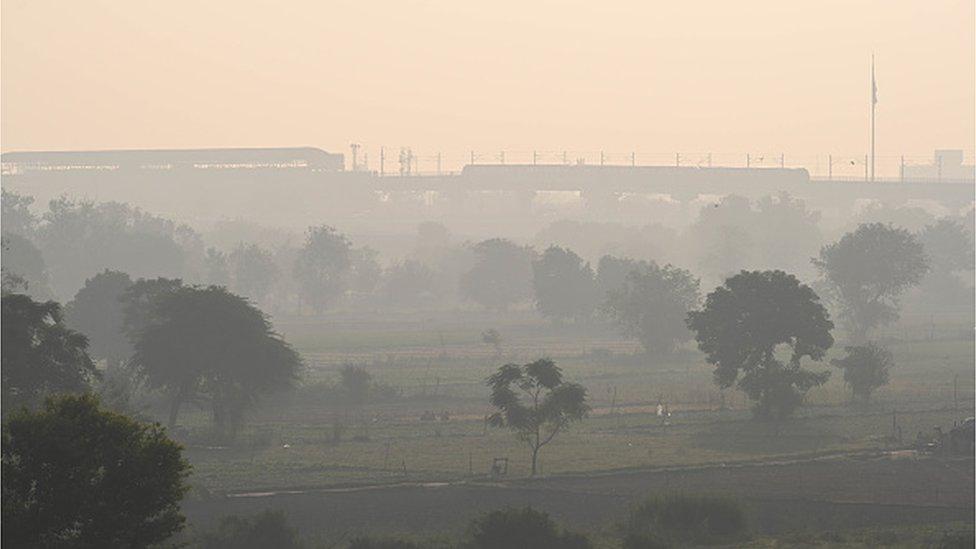Air pollution: Delhi air turns very poor but 'worst is yet to come'
- Published

Delhi has been witnessing smoggy mornings for the last few days
The air quality in India's capital Delhi has fallen to poor levels and is expected to deteriorate further in the coming days, officials have said.
Delhi is one of the world's most polluted cities through the year.
But its air turns especially toxic in winter due to various factors, including burning of crop remains by farmers, low wind speeds and bursting of firecrackers during festivals.
The polluted air causes severe health issues to Delhi residents every year.
On Monday, the level of PM 2.5 - fine particulate matter that can clog lungs and cause a host of diseases - was 306 in the city, according to government data.
Levels between 101 and 200 are considered moderate while those between 201 and 300 are categorised poor. Anything over 300 is categorised as "very poor" and a figure higher than 500 is considered "severe".
VK Soni, a scientist at India's weather department, said the air quality was expected to remain in the "very poor" category for the next few days.
Residents too have been complaining about the smog in the city, especially in the mornings.
"I think pollution levels have been rising in Delhi for the past 10-12 days. We can feel it in our eyes," a cyclist told news agency ANI.
Some residents said these were the early days in Delhi's pollution cycle and "the worst was yet to come".
Environment Minister Gopal Rai said that the second phase of a Graded Response Action Plan (GRAP) has been implemented to combat the effect of increased pollution.
As part of the strategy, all public transport services, including the Delhi metro and electric bus services, have been instructed to increase their frequency to curb vehicle emissions in the city.
The minister said that in addition to the 13 pollution hotspots identified so far, special teams would be deployed at eight other locations which have been recording high pollution levels.
"They will focus on the sources of pollution, whether it be biomass burning, dust, congestion, or cars," Mr Rai said.
A mix of factors like vehicular and industrial emissions, dust and weather patterns make Delhi the world's most polluted capital.
At this time of the year, the low wind speed also plays a part as it traps the pollutants in the lower atmosphere.
The burning of crop stubble, which is also a major source of pollution, hasn't picked up speed yet in the regions near Delhi but it is expected to intensify in the coming days.
Farmers in neighbouring states of Punjab, Haryana and western Uttar Pradesh burn crop remains to clear their fields for the next sowing cycle.
Northwest winds coming from these states will also pick up speed gradually, carrying smoke from stubble burning into Delhi, according to air quality forecast agency SAFAR.
India's pollution problem, however, is not just limited to Delhi and Indian cities routinely dominate global pollution rankings.
Last week, India's financial capital Mumbai witnessed a drop in air quality, overtaking Delhi several times this month. Officials said that withdrawing rains and constructions work caused the rise in pollution levels in the city.
BBC News India is now on YouTube. Click here, external to subscribe and watch our documentaries, explainers and features.

Read more India stories from the BBC:


Read more India stories from the BBC:
